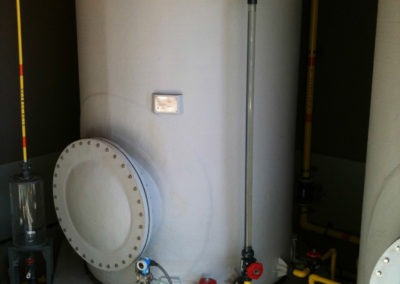
Like most assets, the service life of FRP tanks and pipes can be maximized with proper maintenance. But many owners don’t realize that proper maintenance starts with visual inspections, some of which can be performed by owners or users.
For tanks holding highly corrosive substances an annual inspection is warranted, but for less corrosive substances, every other year or even less often is satisfactory. Diamond Fiberglass recommends owners schedule inspections using a risk-based approach. This may vary the inspection period based on the service, asset life, condition from last inspection, and criticality to operations.
If the FRP tanks or pipes are large or difficult to access, complete visual inspections performed by owners may not be possible, but even partial inspections can be beneficial.
No destructive testing or complicated instruments are required. If an inspection reveals an anomaly, service technicians can be scheduled for a more complete and sophisticated inspection to determine if/when repairs are needed.
These visual inspections are often no more than a walk around to examine the exterior followed by a look inside, either manually or via cameras and borescopes. A key thing is to determine the condition of the corrosion liner and internal secondary bonds.
What to look for:
- Evidence of leaks
- Stress fractures (cracks)
- Bulges or indentations
- Misalignments
- Condition of fasteners & gaskets
- Unusual color changes
- Fibers showing
FRP tanks & pipes that are not maintained properly can suffer significantly shorter service lives. Don’t ignore yours!
For more information regarding FRP tank & pipe inspections, visit diamondservices.com or diamondfiberglass.com.

Recent Comments